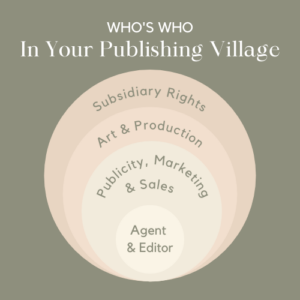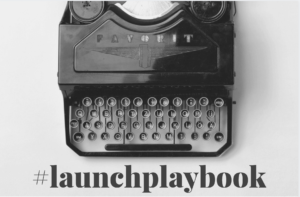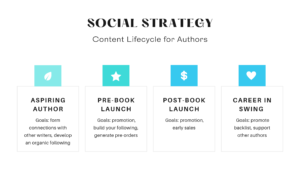Posts by Sarah Penner
In my early writing days–before I was agented, and long before my debut novel was published–I sought writing advice on every imaginable topic: premise, drafting, writing routine, word choice. I was like a sponge, heeding advice from authors who’d reached the goals I envisioned for myself. I also listened to the guidance laid out by agents and editors: they were the ones I wanted to impress, after all. Surely I should follow their advice “to a T.”
As my writing career lifted off the ground, I gradually began to think for myself and reconsider all those tidbits of advice I’d jotted onto Post-It notes. I realized that some conventional writing “rules” didn’t work for my style and narrative voice. Other rules, I considered downright impractical.
All writing advice, I ultimately decided, should be taken with a grain of salt. Writing is art, and art doesn’t mix with rules. Take what works for you as the creator, and leave the rest behind.
Below are six conventional writing “rules” I’d encourage writers to think twice about.
Rule #1 worth breaking: Avoid the passive voice
Within moments of picking up The Night Circus by Erin Morgenstern, I scratched my chin: the story was full of passive sentences. (“His tailcoat has been tossed lazily over a velvet armchair…”) I remember thinking, “Morgenstern’s editor let her get away with this?” followed immediately by, “I want to see if I can get away with this.” The fact is, the passive voice is lovely and artistic. It creates a sense of mystery and separation, which was ideal for the magical realm in which The Night Circus takes place.
Morgenstern herself addressed this very topic in a WU interview a decade ago, saying “the passive voice fits stylistically” with the “old fashioned storytelling feel” she sought in the story.
Also worth noting is Morgenstern’s use of the second person POV. It’s rare for a narrator to direct a statement at the reader, but The Night Circus does just that in the early pages of the story: “Now the circus is open. Now you may enter.” It’s beautifully enchanting, an invitation for the reader to fall into the story at that very moment.
Rule #2 worth breaking: Write what you know
Ah, an old favorite. We’ve all been hearing this since the day we first set pen to paper, haven’t we? Well, pardon my expression, but I call BS.
I knew absolutely nothing about poison before writing The Lost Apothecary. I had a foundational interest in herbs, plants, and cooking, but that’s still a long stretch from arsenic, strychnine, and nux vomica. What’s a writer to do? Expand what you know. Take the time to do the research. No one will know the difference, as evidenced by the number of emails I still receive from pharmacists who are impressed with the level of detail throughout The Lost Apothecary.
I shudder to think of the many aspiring […]
Read MoreAt the start of any mystery or whodunit, often authors find themselves grappling with a conundrum: how, exactly, do I hide my villain or “bad guy” in plain sight? This individual is often a key player in the story, meaning we need to introduce the reader to our villain early (ultimately, this makes for a more satisfying ending: no one wants to learn that the villain is a minor side character who shows up in act III.)
We also need the reader to engage regularly with the hidden villain throughout the story. When keeping our villain’s identity under wraps, we want the reader to not only understand this key character’s motives, but even root for them. And of course, we want the reader to trust the hidden villain.
Below are eight characterization and plot strategies to keep your villain’s identity disguised until that perfect moment when you, the author, decide to unveil the truth.
Use first-person point of view
First-person POV is the easiest way to establish a meaningful connection between your villain and your reader. It allows the reader to effortlessly step into the villain’s emotional state, which is important as we work to establish sympathy for the “bad guy” we’re hoping to hide among our cast of characters.
Personally, I’m a fan of epistolary narrative structures, and this is easily paired with first-person POV. For example, I can think of nothing more compelling than the tell-all diary of a meek and likable villain, documenting (firsthand!) the events leading up to the central crime in a story—a crime they commit.
Provide a sympathetic background
Every character enters a story with his or her own flaws and emotional wounds. Consider making these as relatable, and heart-breaking, as possible. A few ideas: poverty or financial struggles; flawed physical appearance or physical afflictions; or a deep personal loss.
Once you’ve established the emotional or physical characteristics that will make your reader pity your hidden villain, let us into the villain’s thoughts about these characteristics. Show us his or her embarrassment, shame, or grief. Remember, we want the reader to desire healing, and happiness, for the hidden villain.
Establish motivations and goals
Like other key characters in your story, your hidden villain must have his or her own story goals that are both (1) stated out loud, and (2) warranted. We want the reader rooting for the hidden villain throughout the story, and the only way to do this is to establish what, exactly, your bad guy wants—and why.
Once you’ve done this, then…
Throw a wrench in your hidden villain’s plans
Once you’ve established a reader’s sympathy for this all-important character, and once you’ve established that character’s goals, make something bad happen to them. Ideally, this negative event is related to the flaws and emotional wounds you’ve established above. We want the reader to quite literally feel bad for the villain. We want them to say, “aww” or, “oh no…” We want the reader to be convinced that your hidden villain’s goals are out of reach.
This strategy is most effective in acts I and II of your story (because in act III, you’ll be focused on revealing the villain and, hopefully, showing the reader how very wrong they were about this character all along.)
Demonstrate virtue and show emotion
As your villain responds to […]
Read MoreCliffhangers are a favorite technique of thriller and suspense writers, but every genre can benefit from a suspension in information. Cliffhangers contribute to pacing and tension, and they are one of the most effective ways of encouraging a reader to start a new scene or chapter when they might otherwise set the book down for a short break. They’re useful even in literary fiction, short stories, and narrative nonfiction (Erik Larson is a master at inserting compelling cliffhangers into his nonfiction books!)
Many authors are confused about cliffhangers versus twists. Cliffhangers are a short-lived suspension of information, whereas twists are a long-lived redirection of information. Cliffhangers sever a scene at its most dramatic moment, whereas twists create drama by overturning reader expectations. Cliffhangers make a reader say, “I want to turn the page to find out what happens,” whereas twists make the reader say, “I did not expect it to happen this way.”
We as authors tend to be too nice to our readers, and it’s tempting to give the reader what we know he or she wants early in a book. But readers secretly love to be teased, and they know we’ll give them the answers eventually.
Crafting an effective cliffhanger is no easy feat, but below I’ve listed several suggestions related to placement, structure, and execution of cliffhangers.
Use POV and structure to your advantage
A multi-POV or multi-timeline story is ripe for cliffhangers. Why? Because your story structure already has built-in breaks, i.e., the switch from one character or timeline to the next. This allows you to cut a scene or chapter at its most dramatic moment and then conveniently switch over to the next character or timeline. It will frustrate your reader in a strangely satisfying way—especially if your characters and timelines are equally compelling and the reader is anxious to resolve previous cliffhangers you’ve set up in the story.
Read More
The forthcoming launch of any book is a heavy lift, rife with news to announce, people to call, and updates to publicize.
But if you’re launching a debut? It’s an especially daunting endeavor because, well, you’ve never done this before! And the pressure is high: a splashy, big hit debut can make an author’s career. But conversely, a debut launch that doesn’t meet author or publisher expectations can be difficult to stomach, and this puts additional weight on second or third titles.
How is a debut author to know what, exactly, should be on his or her “task list” in the months approaching their big book launch? No doubt, authors publishing via the indie route will have more on their plate, but even traditionally-published authors are expected to take on much of the heavy lifting these days.
Below, I’ve pulled together a “playbook” for debut authors. Consider it a list of ideas for debut authors in the year leading up to their launch.
By all means, take this list with a grain of salt: there may be items on here that don’t apply to your specific circumstances or a suggested timeframe that needs to be reworked.
9-12 months until launch
6-9 months until launch
Read More
If there’s one topic I love talking about with fellow writers, it’s women’s empowerment in fiction. For this reason, I was thrilled in late January to see that Publishers Weekly had run a fabulous piece on exactly this subject, titled “Is Women’s Empowerment Coming to Publishing?” The article was from the perspective of big players in the industry like marketing and sales managers, executive editors, and editorial directors, and it outlined what publishers are seeking in the women’s empowerment space. It also covered the impact of recent political changes on women’s fiction and popular sub-genres related to women’s empowerment.
While I enjoyed the article, I felt that something was missing—more precisely, a perspective was missing: booksellers! After all, booksellers are the ones with “boots on the ground,” the people interacting every day with readers. They are closest to the discussions about what readers are seeking when they step into a store to browse. Publishing professionals may utilize industry trends and data to derive their own conclusions, but is there any replacement for approaching a reader and asking, “what are you looking for?”
I think not.
So, I set out several weeks ago to fill the gap and seek this missing perspective. I am thrilled now to share the feedback from a half-dozen booksellers about what their readers are seeking in the women’s empowerment space, and why such titles are important to their readers.
I also invited each bookseller to suggest several titles in the genre. There are some fabulous recommendations here!
Question: Why do you feel women’s empowerment in fiction is important to your readers today?
“Although we have made great strides, it is still not an easy road for women. Speaking for myself, when I see strong women making changes in the books I read, I feel a personal sense of empowerment. I am sure it is the same for many of my readers.” –Mary Webber O’Malley, Skylark Bookshop
Read MorePlease welcome Sarah Penner to Writer Unboxed as our newest regular contributor! Sarah’s debut, THE LOST APOTHECARY, releases on March 2nd. You can learn more about her HERE. Welcome, Sarah!
At long last, 2021 has arrived on our doorstep. I’m an optimist, and I imagine a number of you will agree with me on one thing: 2021 is destined to be better than 2020.
This holiday season has looked nothing like we anticipated. Old traditions—New Year’s Day brunch, traveling to see family—have been set aside. But no matter the quarantines and restrictions in place, there’s one tradition many of us will still keep: we’ll sit down with a pen and paper to make a list of resolutions for the shiny new year.
Personally, I love this tradition. It’s an opportunity to revisit the goals I set twelve months earlier; identify the strategies and habits that worked; and set new priorities to pursue in the coming months. I’ve always been a goal-setter, and I can’t imagine rolling into a new year without a bit of introspection.
But before we take out our pen and paper to set goals for the new year, let’s talk through a few things.
Resolutions that stick
It’s been well-established by psychologists that new year’s resolutions simply don’t stick, and the reasons for this are varied.
Most of the time, resolutions fail due to lack of specificity. Some resolutions are too vague (“I will improve my craft this year”) or too all-encompassing (“I’ll be more active in the writing community this year.”) So, when setting goals for the new year, remember to be specific: “I will sign up for a class about better dialogue-writing,” or “I will join an online critique group aimed at YA writers.”
Also, ensure your resolution is something you can control. “I will sign with a literary agent” is a nice resolution to make, but you only have so much power over this. No matter how polished and on-the-mark your manuscript might be, it still needs to hit the sweet spot for an agent—a person with their own thoughts and behaviors that should not drive your sense of success. Instead, set goals you can control, like how many agents you will research or query this year.
You might be tempted to think that resolutions don’t stick due to a lack of willpower or desire, but this is a sure-fire path to low self-esteem: this is not a matter of how badly you want it. It is a matter of strategy and approach. Your desire to achieve a goal is there, but it needs to be transformed into a step-by-step approach that will bring your goal closer.
Said another way, successful resolutions require good habits.
Habits are better than resolutions
Resolutions are often big, life-changing visions. Habits, on the other hand, are subtle. They require less change to our behavior, making them more likely to stick.
When writing down your list of goals for the year, it’s perfectly fine to write down the big goals. But then, beneath each one, write down the smaller habits necessary to make them happen (daily or weekly is best!) A habit, by definition, is a practice or a tendency. Keep this in mind when listing behaviors that will support your goals.
Let’s take a few […]
Read MorePlease welcome SarahPenner.com to WU today! Sarah is the debut author of The Lost Apothecary, forthcoming in March 2021 from Park Row Books/HarperCollins. The Lost Apothecary will be available in the U.S., U.K., Canada, and translated in eleven territories worldwide. Sarah works full-time in finance with a Big Four accounting firm. Sarah and her husband live in St. Petersburg, Florida with their miniature dachshund, Zoe.
Sarah reached out to WU lately to ask about running a survey with the community to tap into workplace changes, and crafting a post around that data, and we said an enthusiastic YES. Thank you to all who participated–nearly 450 voices.
To learn more about Sarah and The Lost Apothecary, visit SarahPenner.com; and follow her on Instagram, Twitter, Facebook, Goodreads, and Amazon.
Creativity in a Pandemic: Navigating Changes to our Work Environment
I think many of us can agree that in the early days of the pandemic, we (somewhat excitedly) let this thought cross our mind: No social engagements? Work from home during lockdown? I’m going to get so much more writing done!
My, how naïve we were.
I’ll be the first to admit that months ago, as lockdowns began, I overestimated the number of wide-open hours I’d have to dedicate to my work-in-progress. Similarly, I underestimated my pandemic-related anxiety. But when I developed a mild case of shingles in April, there was no denying it: deep down, I was stressed. And this whole writing-during-the-pandemic thing was, in short, not going well.
We’re more than seven months into this thing, and reality has hit: writing in a pandemic is hard. Everyone’s work environment has shifted, for better or worse. No matter if you’re a parent or student, employee or retiree. If you’re a writer, you’re feeling this.
I work full-time in finance for a large consulting firm, and I used to commute to an office. Now, I quite literally sit down at my desk and log in from eight until five each day. It’s a pretty typical situation for many office workers these days, and I am so, so sick of this desk. I envision many of you nodding along with me: the “desk fever” is getting real.
Recently, I tuned into a virtual launch party for another author. She doesn’t work a 9-to-5, but she writes full-time and has a young son at home. As she explained the strange experience of launching a book in a pandemic, she commented on the very real struggles she’s facing with her child at home. Like many parents, she has now found herself responsible for at-home schooling and full-time child care, in addition to her writing.
After her launch event, I spent a few minutes musing on the struggles she’d outlined. She doesn’t have an office job, and I don’t have children. Yet despite how different our lives and routines appear, we are both facing changes in our work environment—and dealing with the repercussions of it, whether good or bad.
I began to wonder about the broader population of writers, and the impact of changing work environments on our writing time.
The results were eye-opening, to say the least.
Our recent […]
Read More

















